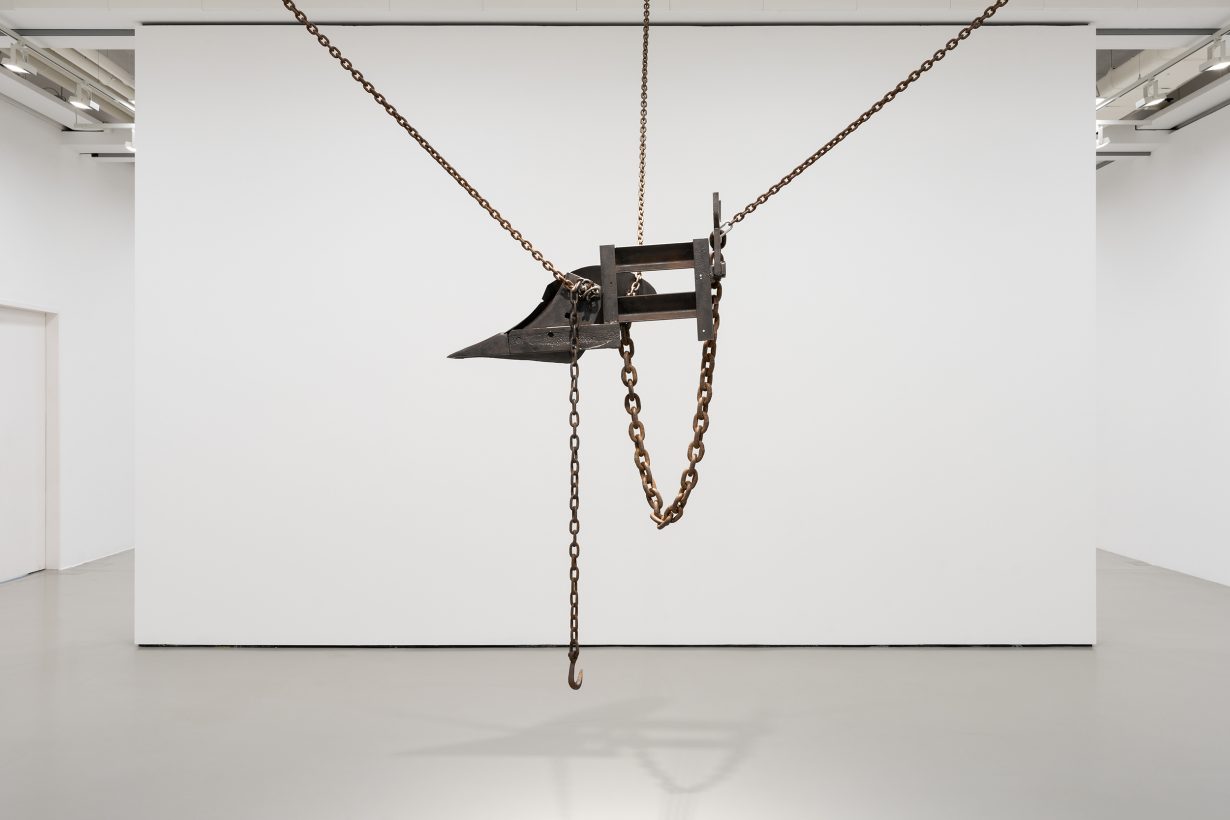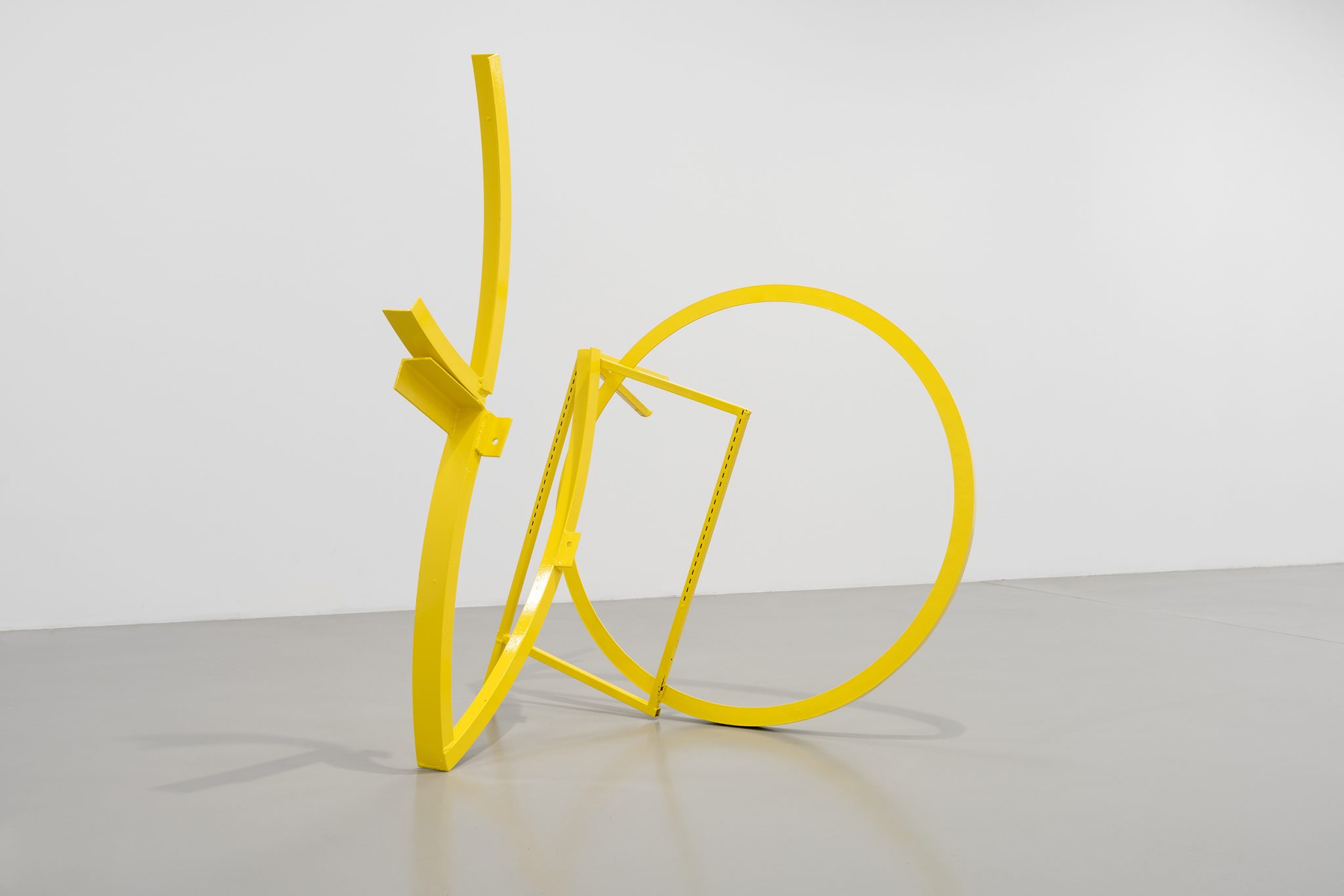In Some Bright Morning at Fridericianum, Kassel, the artist’s lyrical metal works are at once ethereal and laced with undercurrents of racial violence
In 1941, F. Scott Fitzgerald famously wrote that there are no second acts in American lives; Melvin Edwards was four then, he’s now eighty-seven and his second act is a decade deep. In 1970, after five years of showing publicly, the Houston-born artist was the first African-American sculptor to have a solo exhibition at the Whitney Museum. His primary aesthetic at the time – Minimalism using materials of containment such as barbed wire and chains – is represented, in his first European retrospective, by works like the corner piece Lines for the Poet (1970): a big V-shaped arrangement of lengths of barbed wire strung from adjacent walls and meeting on a cantilevered, outthrusting L-shaped length of stainless steel. It’s ethereal and almost invisible from a distance, lethal up close.
In the years and decades after this, though, and not least as abstract art fell into disfavour, Edwards’s star waned, especially in Europe. His rising profile now, buoyed by the contemporary artworld’s belated interest in Black artistry and in older practitioners more generally, began with the 2015 Venice Biennale. There, curator Okwui Enwezor showcased a startling row of Edwards’s long-running Lynch Fragments series, a goodly number of which are included among the present show’s 51 works dating from 1963 to 2019. They’re blackened metal agglutinations of machine parts, chains, sharp tools, horseshoes and other discards that the artist collected while walking railroad tracks, welded together in ways that often resemble distorted, dehumanised faces. Some Bright Morning (1963) is the earliest work here: dating from the early years of the civil rights movement, it features threatening cleaverlike planes attached to a circular central form; a pendant length of chain dangles a chunk of what could be ore, or a bodily organ. While technically abstract, this work points towards racial violence in America – its title refers to a section of Ralph Ginzburg’s 1962 book, 100 Years of Lynchings – and appears utterly uninterested in the inward-looking formalist conversations that dominated so-called advanced art at that time. Like other works from the series, it’s small, but its wall power is immense.

Yet this is only a fragment of Edwards’s story. Equally striking are his freestanding steel sculptures from the 1970s and 80s: big, typically multipart and composed of angled upright planes that are often curved and end in sharp upright points. See, for example, 1988’s two-part, stainless steel Adeoli Goacaba, a series of welded silvery hemispheres and rough triangles that feel in conversation with a host of artists (Tony Smith, Alexander Calder, surrealist-era Giacometti) while also insistently resembling blades; you might, involuntarily, imagine getting impaled. That said, Edwards isn’t a monomaniacal equation-maker, forever insistent on abstraction cut with real-world pain. Other works, like 1974’s Tan Ton Dyminns – a free-standing fusion of rhombus and triangle next to an upright ladder with a curving swoop of midnight-blue metal attached, a snaking slide from the ladder’s heights – have the insistency and dreamy elusiveness of poetry. (Indeed, several works here allude to the artform or are named in tribute to poets.) The same year’s Augusta is one of a sequence of works that burst into faux-cheery hot colour (sunny yellow) and has a rustic vibe, faintly suggesting the broke-down remnants of a farmer’s cart, squished wheel attached to bowed lengths of metal. Brightness contains its inverse, as the show’s title reminds us.
Edwards began as primarily a painter, first in Los Angeles, where he studied at USC, and then – during the late 60s – in New York, developing out of social realism into abstraction along the way. By the 70s he’d put his own wrinkle on the medium: spraypainting over ominous loops and lengths of chain, adding watercolour washes and daubs. The show goes light on these, but they still demonstrate Edwards’s ability to bend an aesthetic – here, post-painterly lyrical abstraction – to his will; these works are equal parts featherlight and as heavy as, indeed, chains; repurposing the tools of bondage, they make purely abstract painting feel frivolous. An early highlight in the show, Agricole (2016), does the same for abstract sculpture: suspended from the ceiling by three chains, or strung up, is a welded metal hybrid that suggests, from various angles, a piece of sharp-edged harvesting machinery, a soldier’s helmet, a tribal mask, a warped head; the French title, in context, suggests colonial exploitation unto torture. Agricole radiates brutality and points towards forced labour and racially motivated violence but floats free of narrative, time, place. It was made in the year of Trump’s election. It could have been made during the 60s; it could have been made yesterday.
Some Bright Morning at Fridericianum, Kassel, through 12 January
